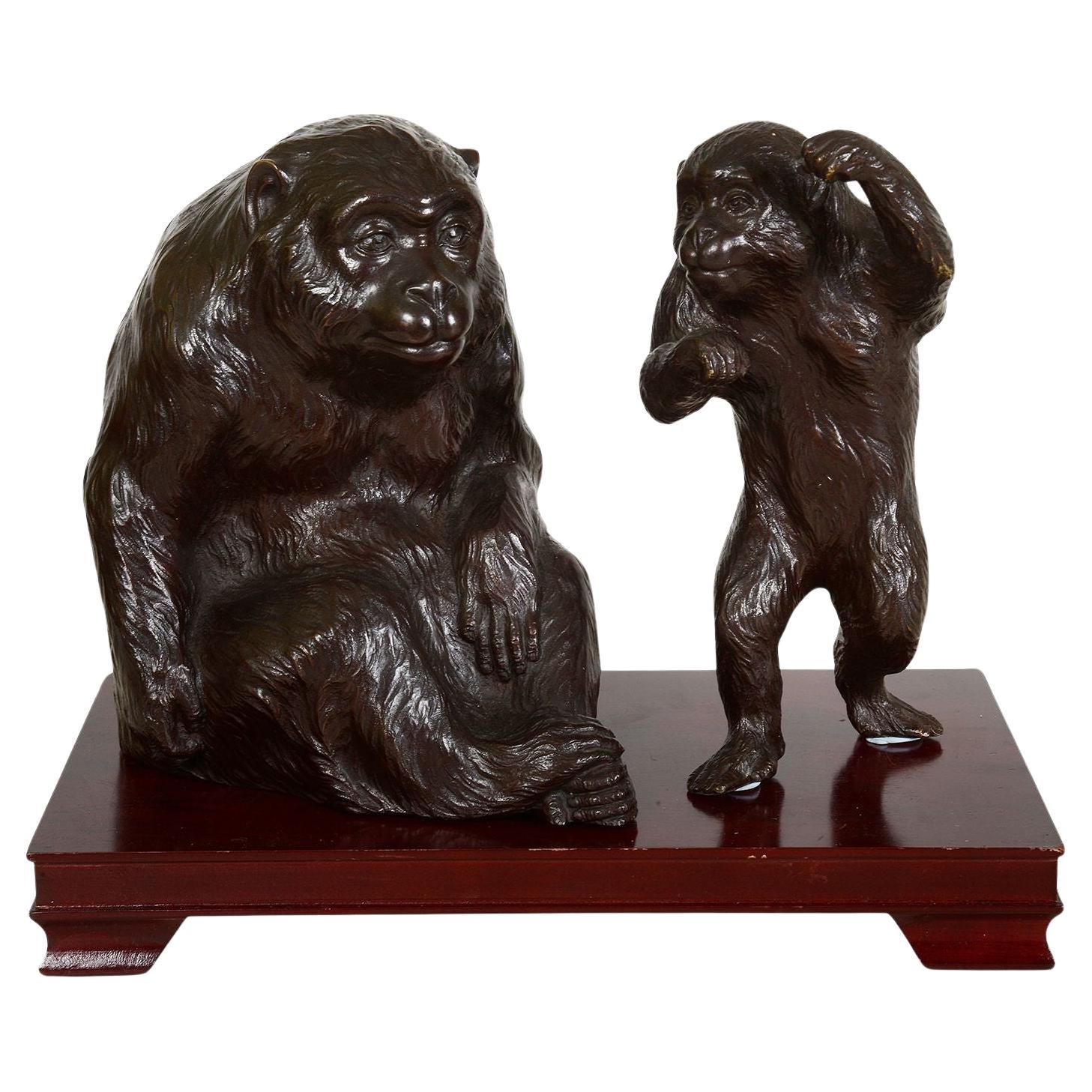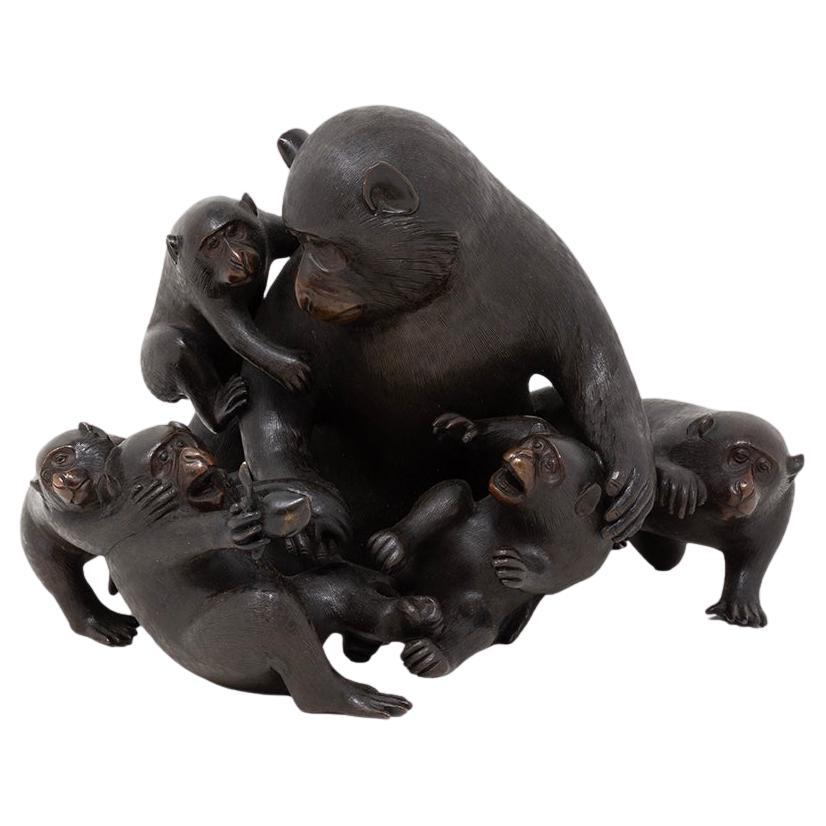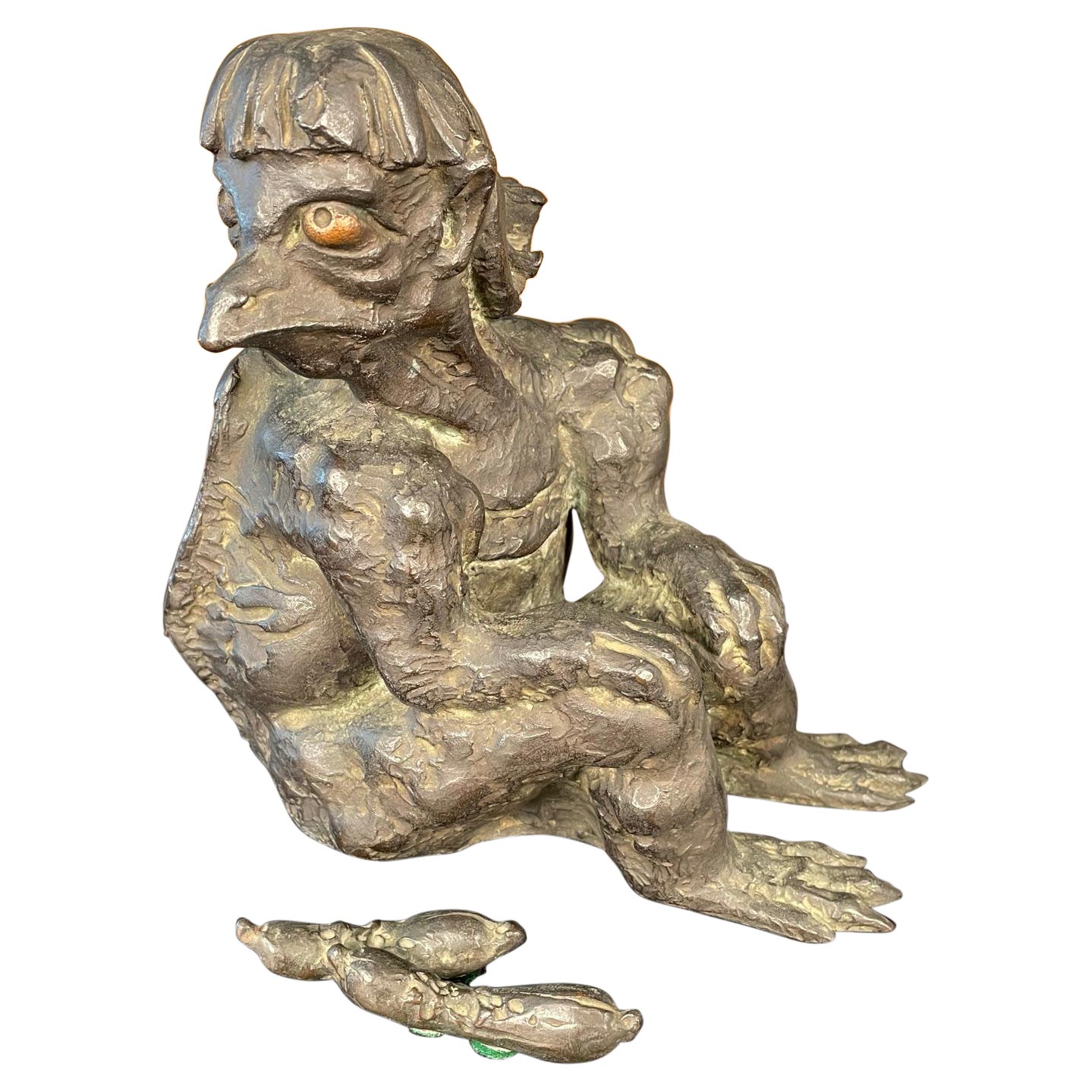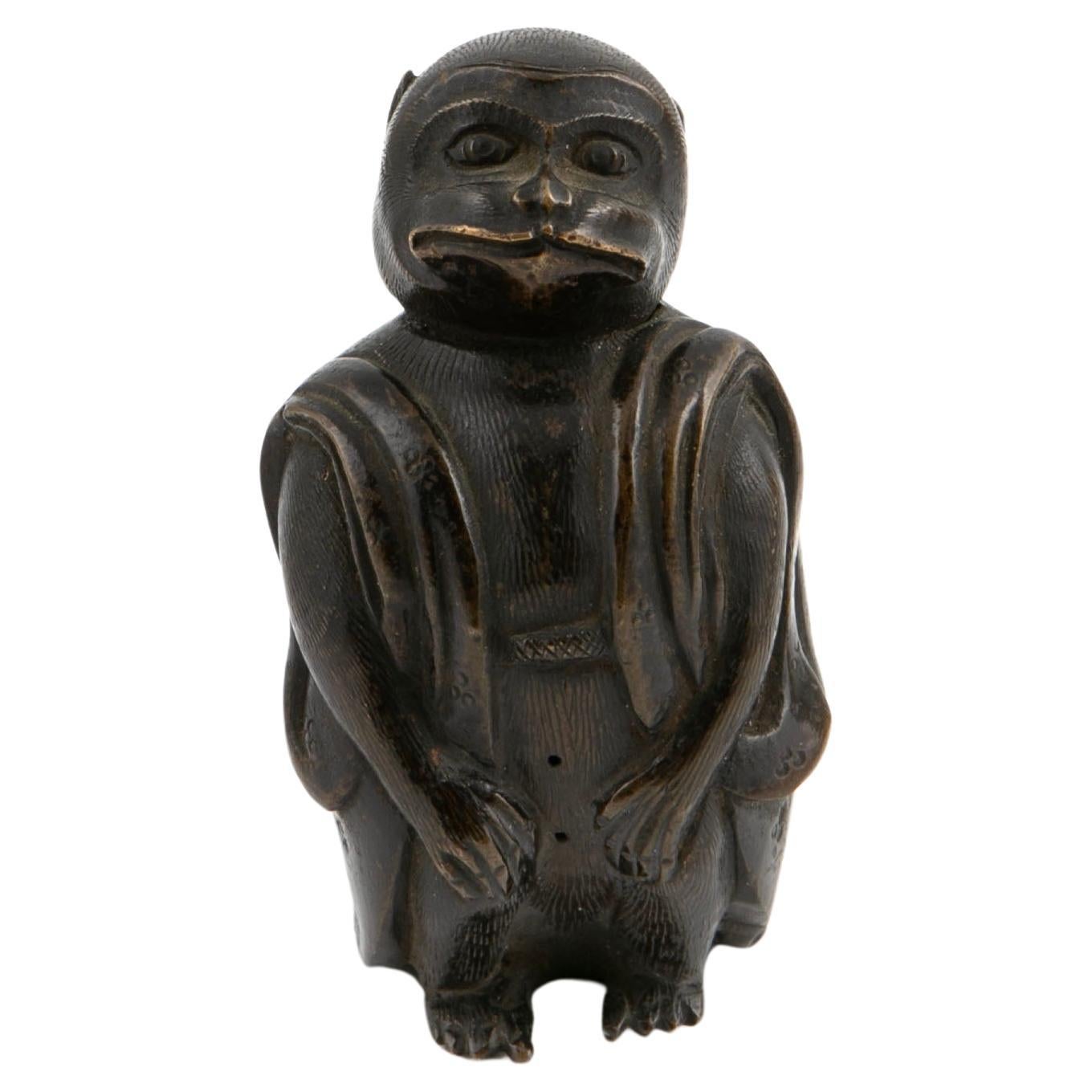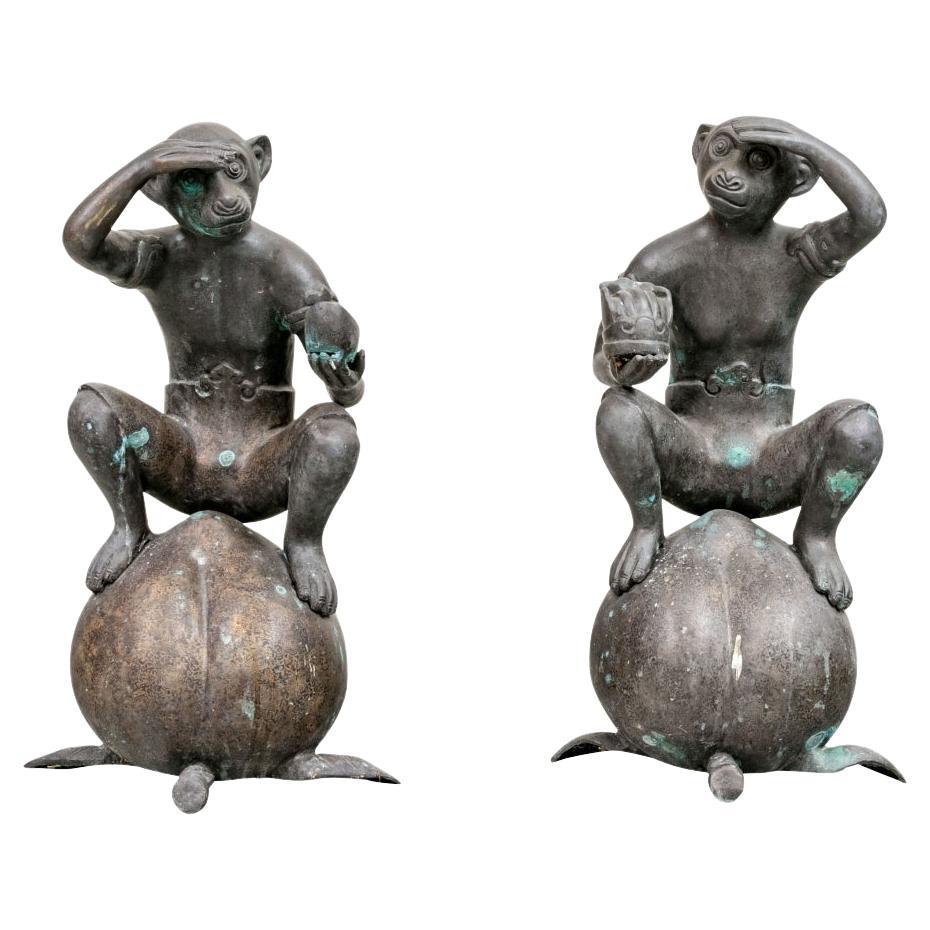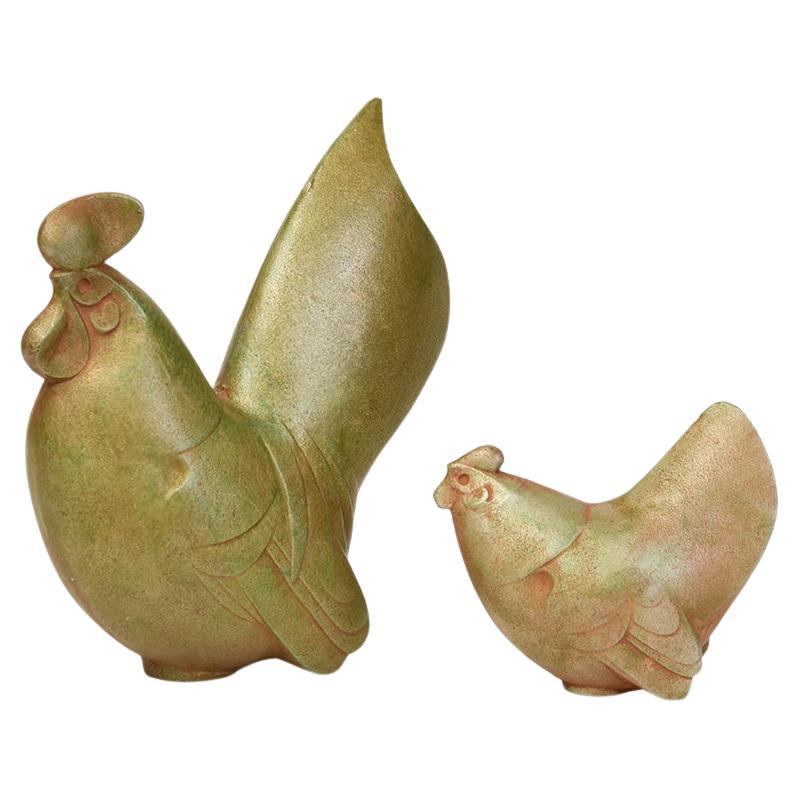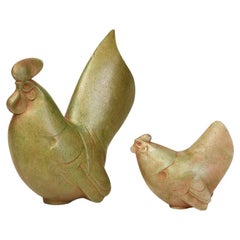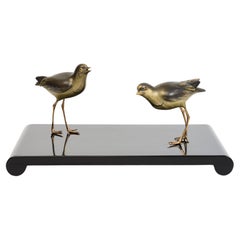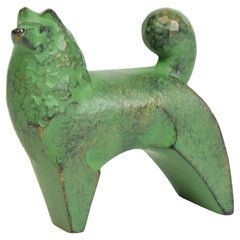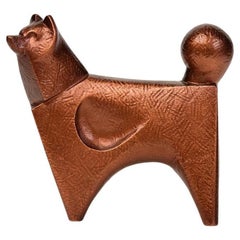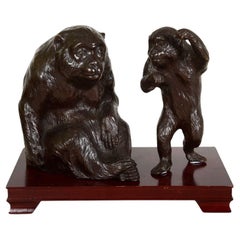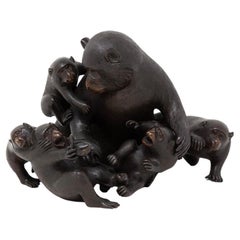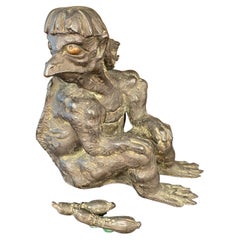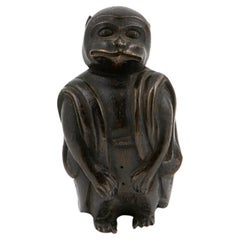Items Similar to 20th Century, Showa, a Set of Japanese Bronze Animal Monkey with Artist Sign
Want more images or videos?
Request additional images or videos from the seller
1 of 13
20th Century, Showa, a Set of Japanese Bronze Animal Monkey with Artist Sign
$1,080per set
$1,350per set20% Off
£820.07per set
£1,025.09per set20% Off
€937.81per set
€1,172.26per set20% Off
CA$1,508.92per set
CA$1,886.15per set20% Off
A$1,678.24per set
A$2,097.81per set20% Off
CHF 876.33per set
CHF 1,095.41per set20% Off
MX$20,422.45per set
MX$25,528.07per set20% Off
NOK 11,192.04per set
NOK 13,990.04per set20% Off
SEK 10,496.15per set
SEK 13,120.19per set20% Off
DKK 6,999.24per set
DKK 8,749.05per set20% Off
Shipping
Retrieving quote...The 1stDibs Promise:
Authenticity Guarantee,
Money-Back Guarantee,
24-Hour Cancellation
About the Item
A set of Japanese bronze animal monkey with artist sign.
Age: Japan, Showa Period, 20th Century
Size: Height 6.2 - 12.8 C.M. / Width 5 - 10.2 C.M. (size excluding stand)
Condition: Nice condition overall.
- Dimensions:Height: 5.04 in (12.8 cm)Width: 4.02 in (10.2 cm)Depth: 1.97 in (5 cm)
- Sold As:Set of 2
- Materials and Techniques:
- Place of Origin:
- Period:
- Date of Manufacture:20th Century
- Condition:
- Seller Location:Sampantawong, TH
- Reference Number:Seller: DJ10211stDibs: LU5730229940112
About the Seller
4.9
Platinum Seller
Premium sellers with a 4.7+ rating and 24-hour response times
Established in 2004
1stDibs seller since 2021
102 sales on 1stDibs
Typical response time: 7 hours
- ShippingRetrieving quote...Shipping from: Sampantawong, Thailand
- Return Policy
Authenticity Guarantee
In the unlikely event there’s an issue with an item’s authenticity, contact us within 1 year for a full refund. DetailsMoney-Back Guarantee
If your item is not as described, is damaged in transit, or does not arrive, contact us within 7 days for a full refund. Details24-Hour Cancellation
You have a 24-hour grace period in which to reconsider your purchase, with no questions asked.Vetted Professional Sellers
Our world-class sellers must adhere to strict standards for service and quality, maintaining the integrity of our listings.Price-Match Guarantee
If you find that a seller listed the same item for a lower price elsewhere, we’ll match it.Trusted Global Delivery
Our best-in-class carrier network provides specialized shipping options worldwide, including custom delivery.More From This Seller
View All20th C., Showa, A Set of Japanese Bronze Animal Chickens with Artist Sign
Located in Sampantawong, TH
A set of Japanese bronze animal chickens with artist sign.
Age: Japan, Showa Period, 20th Century
Size: Height 10.2 - 20.9 C.M. / Width 6 - 8 C.M. / Length 12.5 - 18.3 C.M.
Conditio...
Category
20th Century Japanese Antiquities
Materials
Bronze
$1,200 Sale Price / set
20% Off
Early 20th C., Showa, A Pair of Japanese Bronze Standing Birds with Artist Sign
Located in Sampantawong, TH
A pair of Japanese bronze standing birds on the stand with artist sign.
Artist signature is on the last photo.
Age: Japan, Showa Period, Early 20th Century
Size of birds only: Heigh...
Category
Early 20th Century Japanese Sculptures and Carvings
Materials
Bronze
$1,080 Sale Price
20% Off
20th Century, Showa, Japanese Bronze Animal Dog with Artist Sign
Located in Sampantawong, TH
Japanese bronze animal dog with artist sign.
Age: Japan, Showa Period, 20th century
Size: Height 9.8 C.M. / Width 4 C.M. / Length 9.2 C.M.
Condition: Nice condition overall.
Category
20th Century Japanese Metalwork
Materials
Bronze
$400 Sale Price
20% Off
20th Century, Showa, Japanese Bronze Animal Dog
Located in Sampantawong, TH
Japanese bronze animal dog.
Age: Japan, Showa Period, 20th Century
Size: height 14.3 cm / width 6.5 cm / length 15.8 cm
Condition: Nice co...
Category
20th Century Japanese Sculptures and Carvings
Materials
Bronze
$760 Sale Price
20% Off
20th Century, Showa, Japanese Bronze Animal Bird and Bamboo
Located in Sampantawong, TH
Japanese bronze bird and bamboo.
Age: Japan, Showa Period, 20th Century
Size: Height 18.8 C.M. / Width 8.8 C.M. / Length 20.5 C.M.
Condition:...
Category
20th Century Japanese Antiquities
Materials
Bronze
$960 Sale Price
20% Off
20th Century, Showa, Japanese Bronze Animal Boar with Artist Sign
Located in Sampantawong, TH
Japanese bronze animal boar with artist sign.
Age: Japan, Showa Period, 20th Century
Size: Height 10.3 C.M. / Width 8.5 C.M. / Length 23.2 C.M.
Condition: Nice condition overall.
Category
20th Century Japanese Sculptures and Carvings
Materials
Bronze
$1,000 Sale Price
20% Off
You May Also Like
Meiji period Japanese bronze Monkeys.
Located in Brighton, Sussex
These exquisite Japanese Meiji period sculptures depict two patinated bronze monkeys, showcasing the artistry and craftsmanship of the era. The larger monkey, seated with a contempla...
Category
Antique Late 19th Century Japanese Sculptures and Carvings
Materials
Bronze
Japanese Meiji Period Bronze Monkey Group Sculpture Okimono Shosai
Located in Newark, England
Featuring Seven Japanese Macaques
Form our Japanese collection, we are delighted to offer this Japanese Bronze Monkey Group by Shosai. The Japanese Bronze Group displaying a male father monkey and his infants playing around and being mischievous with Persimmon fruit. The monkeys modelled as Japanese macaque monkeys (snow monkey). The bronze okimono is beautifully patinated with a highly lifelike and naturalistic casting signed to the underside Shosai 正齊鋳. The Bronze group dates to the Meiji Period (1868-1912) circa 1885.
Japanese macaque (snow monkey) is a terrestrial Old World monkey species that is native to Japan. They are known as snow monkeys because some live in areas where snow covers the ground for long periods each year hence their nickname. No other non-human primate lives further north or in a colder climate than the snow monkey. Individuals have brownish grey fur, pinkish-red faces, and short tails. Two subspecies are known and their conservation Status is of least concern. In Japan, the species is known as Nihonzaru ニホンザル, 日本 (Japan/Nihon) and saru 猿 (monkey) to distinguish it from other primates, but the Japanese macaque is the only species of monkey in Japan.
The Japanese macaque features heavily in the religion, folklore, and art of Japan, as well as in proverbs and idiomatic expressions in the Japanese language. They are often seen in paintings, block prints and represented in all manner of carvings from Okimono to netsuke. Many of these art forms reside in the world’s most famous museums and collections, some of the most prominent pieces by artists such as Mori Sosen and Kawanabe Kyosai. In Shinto belief (Japan’s indigenous religion/nature religion) legendary mythical beasts known as raiju sometimes appeared as monkeys and kept Raijin (the god of lightning/storms) company. In another well known tale the three wise monkeys who warn people to “see no evil, hear no evil and speak no evil” can be seen depicted in relief over the door of the famous Tosho-gu shrine in Nikko.
Meiji Period was an era of Japanese history that spanned from 1868 to 1912. It was the first half of the Empire of Japan, when the Japanese people began to build a paradigm of a modern, industrialised nation state and emergent great power, influenced by Western countries and aesthetics. As a result of radically different ideas, the changes to Japan were profound and it affected the social structure, politics, economy, military, and foreign relations across the board. The period corresponded to the reign of Emperor Meiji and was preceded by the Keio era and was succeeded by the Taisho era.
Cultural Art during the Meiji Period was of particular interest to the government and they overhauled the art export market which in turn promoted Japanese arts via various world’s fairs, beginning in Vienna at the world fair in 1873. The government heavily funded the fairs and took an active role organising how Japan’s culture was presented to the world including creating a semi-public company named Kiritsu Kosho Kaisha (First Industrial Manufacturing Company). The Kiritsu Kosho Kaisha was used to promote and commercialise exports of Japanese art and established the Hakurankai Jimukyoku (Exhibition Bureau) to maintain quality standards. For the 1876 Centennial International Exhibition in Philadelphia, the Japanese government created a Centennial Office and sent a special envoy to secure space for the 30,000 items that would be displayed. The Imperial Household also took an active interest in arts and crafts, commissioning works by select artists to be given as gifts for foreign dignitaries further emphasising the high quality and importance of Japanese art. Just before the end of the 19th century in 1890, the Teishitsu Gigeiin (Artist to the Imperial Household) system was created to recognise distinguished artists. These artists were selected for their exceptionally high quality wares and talent in their own industry. Over a period of 54 years Seventy artists were appointed, amongst these were ceramicist Makuzu Kozan and cloisonné enamel artist...
Category
Antique Late 19th Century Japanese Meiji Sculptures and Carvings
Materials
Bronze
Japanese Bronze Folk Art Kappa, circa 1930
Located in South Burlington, VT
Japan, a beautiful, unusual and possibly unique antique hand cast bronze "Kappa" (child protector) sculptor complete with a separately formed bronze pair of 3.5 inch long cucumbers- a kappa's favorite snack food. Signed.
Signed
An incised artist signature “Bunraku” on base. "Bunraku" is associated with Japanese puppet play and performance,
Kappa Bring Good Fortune
Japanese Kappa...
Category
Early 20th Century Japanese Showa Sculptures and Carvings
Materials
Bronze
$1,200 Sale Price / set
78% Off
Small Meiji Period Japanese Bronze Monkey Sculpture
Located in Kastrup, DK
Small Japanese bronze sculpture in the form of a monkey with intricate details
Finely crafted in dark-patinated bronze with a rich patina.
Dating from the Meiji period (1868-1912) o...
Category
Antique Late 19th Century Japanese Meiji Animal Sculptures
Materials
Bronze
Pair Of South Asian Cast Bronze Monkey Figures
Located in Bridgeport, CT
A fascinating pair of Seated Bronze Monkeys gazing into the distance with shielded eyes while sitting on large peaches. The monkeys with curled tails are dressed in loincloths with d...
Category
20th Century Asian Hollywood Regency Animal Sculptures
Materials
Bronze
$2,250 / set
Group of Three Antique Japanese Hand Carved Monkey Figures
Located in Bridgeport, CT
A group of three early 20th Century well crafted wood Monkey figures in the classic poses of See No Evil, Speak No Evil and Hear No Evil. Timeworn and smooth feeling in the hand, each figure has meticulously carved incising representing fur and dark glass eyes (Monkey representing Speak No Evil has a missing eye). Each Monkey with extended and hooked arm and leg used to link the three for hanging however a loss to the See No Evil figure's leg makes hanging tenuous. with the age, losses and wear the figures have taken on the air of Scholar's Objects to be handled and displayed. Dimensions below are for each Monkey figure.
Dimensions:7.25: high by 2.25" deep by 2.25" wide.
Condition: Please see detail photos. As mentioned above, there are various signs of age including one missing glass eye, loss to the See No Evil Monkey...
Category
Early 20th Century Japanese Meiji Animal Sculptures
Materials
Glass, Wood
More Ways To Browse
Vintage Bronze Animals
Painted Furniture Monkey
Bronze Animal Sculpture Japan
Japanese Bronze Animals
Bronze Monkey
Showa Bronze
Japanese Monkey
Monkey Japan
Monkey Stand
Gold Monkey Sculpture
Temple Stone
Hand Carved Sculptures Japan
Chinese Limestone
Asian Display Stand
Edo Wood
Buddha Hand Sculpture
Bronze Sculpture Buddha
Ancient Chinese Antique
